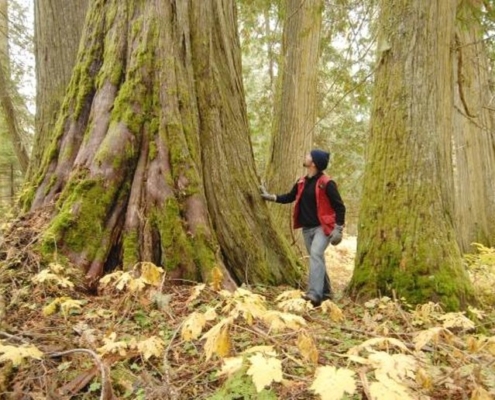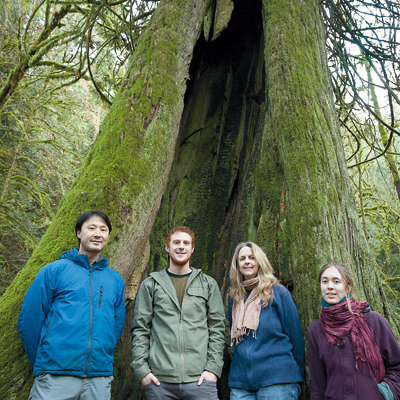
Unique Prince George area-forest should be World Heritage Site, says study
An area of rainforest near Prince George is so unique that it should be designated as a provincial park and protected as a United Nations World Heritage Site, says a new study by the University of Northern B.C. The area, called the Ancient Forest, contains massive stands of giant red cedars usually associated with wet coastal forests, as well as rare plants and lichens.

Rollover Legislation: Claims and Facts
Myths and Facts about the Proposed TFL Expansion Bill, by Independent MLA Bob Simpson

Ancient Forest Alliance (AFA) Celebrates its Three Year Anniversary
To celebrate, this coming Sunday, March 3, the organization will hold an “Ancient Forest Biodiversity Hike” for the public to see a magnificent old-growth Douglas fir grove in Goldstream Provincial Park, on the campground side of the park (Meet at 1:00 pm at the top parking lot by Sooke Lake Rd. and Humpback Rd. near the pub, hike finishes by 3:00 pm – easy to moderate difficulty) with Ken Wu ,TJ Watt, and Joan Varley from the AFA and naturalists Darren and Claudia Copley of the Victoria Natural History Society. The organization will also have a “Meet and Greet” afterwards with snacks, drinks, and a fun slideshow with staff from 4:30 to 6:00 pm on Sunday at its office at 827 Broughton St. in Victoria.

Documents show government is already breaking proposed forestry law
Independent MLA Bob Simpson says documents show that the BC Liberals have no intention of following their proposed law to enable the conversion of volume-based forest ...licenses to area-based tenures.'It’s clear from the leaked cabinet document and Minister Thomson’s letter that Hampton Affiliates has already been promised the first Tree Farm License under the Liberals’ proposed legislation,' said the MLA for Cariboo North. 'The government doesn’t have the right to make this offer because there is no legal way they can fulfill it unless Bill 8 passes.

Eco-groups regard new forest tenure legislation as ‘land grab’
This appears to be essentially a giveaway to big companies,” said Jessica Clogg, a lawyer with West Coast Environmental Law who specializes in forestry issues. She was referring to a tenure rollover plan given first reading last week that ...would give forest companies the ability to convert their volume-based forest tenures to area-based tenures called tree farm licences.“We have seen a lot of consolidation in the industry and this is setting us up for that last grab by those that are left standing to lock down their rights,” she said Thursday. “I see a clash of the titans over the B.C. land base.
